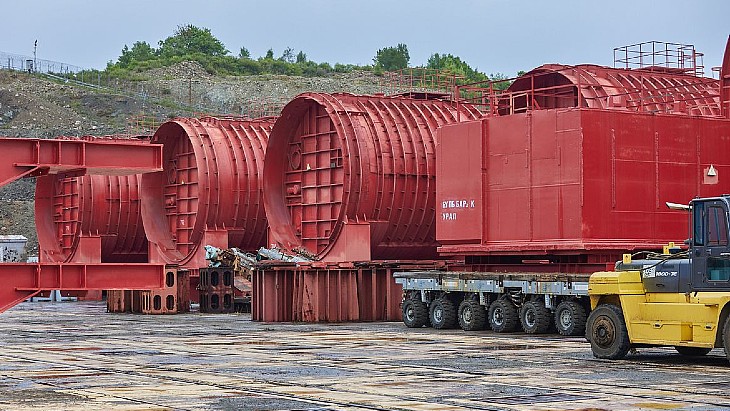Monju decommissioning plan approved
 The basic plan for decommissioning Japan's Monju prototype fast breeder reactor has been officially adopted by the government-appointed team to oversee the task. According to the plan, decommissioning of Monju is expected to take 30 years to complete.
The basic plan for decommissioning Japan's Monju prototype fast breeder reactor has been officially adopted by the government-appointed team to oversee the task. According to the plan, decommissioning of Monju is expected to take 30 years to complete.The basic plan for decommissioning Japan's Monju prototype fast breeder reactor (FBR) has been officially adopted by the government-appointed team to oversee the task. According to the plan, decommissioning of Monju is expected to take 30 years to complete.
.jpg) |
| The Monju FBR (Image: JAEA) |
A key part of Japan's nuclear energy program, the 280 MWe Monju FBR in Tsuruga City, Fukui Prefecture, initially started in 1994. However, it was shut down after just four months when about 700 kilograms of liquid sodium leaked from the secondary cooling loop. Although there were no injuries and no radioactivity escaped plant buildings, this was compounded by operator attempts to cover up the scale of the damage. It eventually restarted in May 2010 but has not operated since refuelling equipment fell into the reactor vessel during a refuelling outage later that year. The equipment was subsequently retrieved and replaced but the Japanese Nuclear Regulation Authority (NRA) did not permit the reactor to restart. In November 2015, following concerns over equipment inspections, the NRA determined the Japan Atomic Energy Agency (JAEA) was not competent to operate the reactor. Last December, the government formally announced its decision to decommission the idled Monju reactor.
The government appointed a team to coordinate the decommissioning of Monju comprising representatives from the Cabinet Secretariat; JAEA; the Ministry of Education, Culture, Sports, Science and Technology; and the Ministry of Economy, Trade and Industry.
On 13 June, the team adopted the government's basic policy for the reactor's decommissioning and approved JAEA's basic plan to carry it out.
JAEA's plan aims to establish a system and organisation for safely decommissioning the reactor within 30 years using the latest Japanese and international technologies and expertise. The organisation will now formulate a more detailed plan to decommission Monju in line with the government's basic policy. Actual decommissioning work at Monju will begin once this detailed plan has been approved by the NRA.
The government's basic policy calls for used fuel to be removed from the reactor and placed in an on-site storage pool within five-and-a-half years. This fuel - together with sodium coolant and other radioactive waste - is to then be removed from Fukui Prefecture and reprocessed. According to the Japan Atomic Industrial Forum (JAIF), the government will finalise the details of the plan on transporting the used fuel before the removal of all the fuel from the reactor has been completed.
The governor of Japan's Fukui Prefecture, Issei Nishikawa, was cited by JAIF as saying: "The national government needs to resolutely develop a plan, given that little progress has been made in selecting sites for the final disposal of used nuclear fuel from the commercial nuclear power plants operated by the country's electric power companies."
The decommissioning of Monju will cost more than JPY375 billion ($3.2 billion), the government estimates. This includes JPY225 billion for maintenance, JPY135 billion for dismantling the plant and JPY15 billion for defuelling and preparations for decommissioning.
Researched and written
by World Nuclear News
_17992.jpg)
_75800.jpg)







_88592.jpg)
_66488.jpg)

